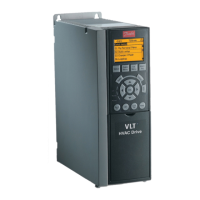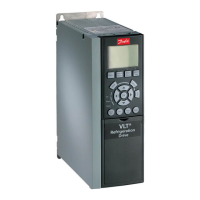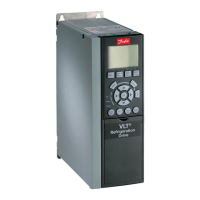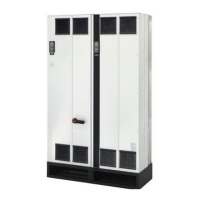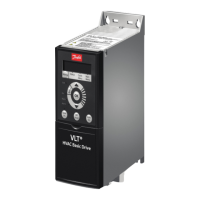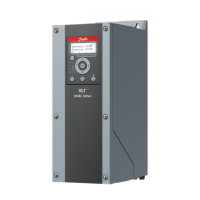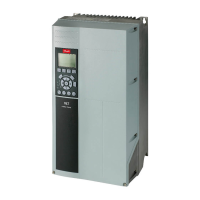NOTICE
A door fan(s) is required on the enclosure to remove the
heat not contained in the backchannel of the frequency
converters and any additional losses generated by other
components inside the enclosure. The total required air
flow must be calculated so that the appropriate fans can
be selected.
Airflow
The necessary airflow over the heat sink must be secured.
The flow rate is shown in Table 3.2.
NOTICE
The fan runs for the following reasons:
•
AMA
•
DC Hold
•
Pre-Mag
•
DC Brake
•
60% of nominal current is exceeded
•
Specific heat sink temperature exceeded (power
size dependent)
•
Specific power card ambient temperature
exceeded (power size dependent)
•
Specific control card ambient temperature
exceeded
Frame Door fan/top fan Heat sink fan
D1h/D3h
102 m
3
/hr (60 CFM) 420 m
3
/hr (250 CFM)
D2h/D4h
204 m
3
/hr (120 CFM) 840 m
3
/hr (500 CFM)
Table 3.2 Airflow
3.3.2
Lifting
Always lift the frequency converter using the dedicated
lifting eyes. Use a bar to avoid bending the lifting holes.
Illustration 3.1 Recommended Lifting Method
WARNING
RISK OF INJURY OR DEATH
The lifting bar must be able to handle the weight of the
frequency converter to ensure that it will not break
during lifting.
•
See chapter 11.1 Power-dependent Specifications
for the weight of the different enclosure types.
•
Maximum diameter for bar is 2.5 cm (1 inch).
•
The angle from the top of the frequency
converter to the lifting cable should be 60° or
greater.
Failure to follow recommendations could result in death
or serious injury.
3.3.3
Wall Mounting - IP21 (NEMA 1) and
IP54 (NEMA 12) Units
Consider the following before selecting the final instal-
lation site:
•
Free space for cooling
•
Access to open the door
•
Cable entry from the bottom
Installation
Operating Instructions
10 Danfoss A/S © Rev. 06/2014 All rights reserved. MG16D302
33
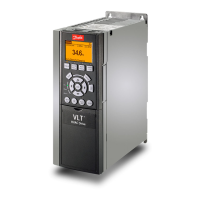
